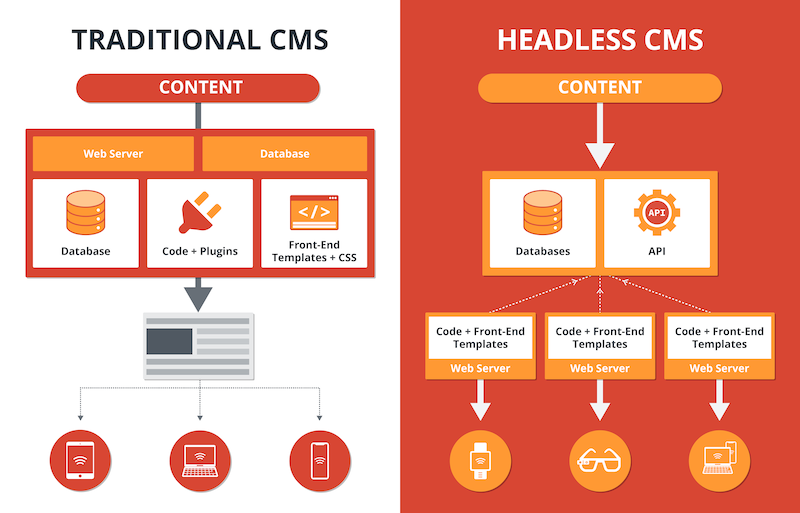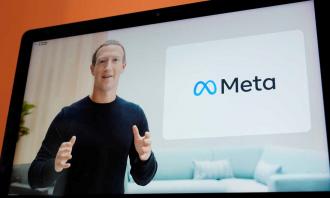

Content enrichment in Headless e-commerce
What is Headless E-commerce?
Headless E-commerce marks a shift in the way we think about the technology architecture of e-commerce. Coupled with the emerging trend of social commerce, it has significant implications for how brands invest in media to drive e-commerce.
But first, it is important to understand what headless e-commerce is. Traditionally, direct-to-consumer (DTC) sites were built using a single unified stack. The front-end was tied to the back-end and as a result, e-commerce sites could be difficult to change and were not as responsive to consumer behavior.
Headless E-commerce essentially separates the two layers and replaces vertical integration with a series of APIs that allow the back-end and front-end to communicate. With the front end now separate from the back end, perhaps: a website, a microsite on a partner's domain, an Alexa skill, a Facebook page, a TikTok.... destination It also means that the brand website is no longer a single point of failure - after all, not even the best website in the world works for everyone. Offering users different ways to buy opens up massive opportunities for brands.
At the same time, most marketers are not involved in technology architecture choices and the concept of Headless E-commerce may seem more like a job for a technical director than anything else. However, as consumer expectations of brands continue to rise, Headless E-commerce is not only a way to make technology a little more streamlined, it gives us the opportunity to rewrite what social commerce means through the twin approaches of incremental gains and exponential changes.

Content Shopping in Headless E-commerce
E-commerce platforms are capable of managing a large amount of product data. They are specifically designed to manage large catalogues containing several elements such as price, product hierarchy and product variations. CMSs, on the other hand, are better suited for managing web content: images, videos, graphics, comments, guides, etc.
In line with the principle of separation of concerns, product data should reside in e-commerce platforms, while website data should be kept in CMS.
So how should this data come together to create a consistent and integrated digital experience for customers?
A number of technical strategies are generally applied. The first is the "SIDE-BY-SIDE" solution, where a rich experience driven by the content simply refers customers to a completely different experience driven by the e-commerce platform. This solution often feels unintegrated because customers who signal an intent to buy are then directed to what often looks like a completely different website. Customers move back and forth between a rich experience without a cash register and a more mundane interface to complete their journey.
Another popular strategy is to synchronize data between platforms. All product data is transferred to the CMS. The product data can then be rendered by the CMS and publishers can overlay additional rich content onto the product data. This process is sometimes optimised by incremental synchronisation strategies, but even then this strategy has serious weaknesses. For large catalogues, there can be a lot of data to extract or verify. Synchronisations can take hours.
A better and increasingly popular strategy is reference and enrichment. It keeps all the data in the system where it is managed. Editors can create rich web content in the CMS and link to external product identifiers and storage devices. When a web page is rendered, product data, such as price and hierarchy, is extracted from the e-commerce system and the CMS rich content. They are then merged into an integrated experience. Performance is guaranteed by server-side caching at the application level. With this strategy, publishers can create generic rich content for all products and tailored product experience pages for specific products.
Exponential change
1. CMOs (Chief Marketing Officers) and CTOs (Chief Technology Officers) together
The decision to move to headless e-commerce was made by the CTOs and not considered the domain of the marketers, but this is a fallacy. It is essential that marketers integrate their requirements, as representatives of the consumer, into this technology architecture, and partner with the CTO to establish a common goal.
2. Develop a clear activation plan
Just because the technology setup allows for a move to headless doesn't mean it's automatic. Brands still need to build the shop, connect product feeds, develop content, plan and execute media - that's why a clear plan of roles and responsibilities is needed.
3. Keeping up with content
Social platforms are content hungry - as a result content costs can increase rapidly. It is therefore necessary for brands to build a content plan and communicate it to their production resources - whether in-house, with agencies or a mixture of both - so that they can keep these costs under control.
Finally, the promise of Headless E-commerce is to bring optimisation to the very last stage of the shopping journey: the point of sale. This promise will not be realised if brands do not have a clear KPI for their e-commerce strategy.
Don't miss any news, subscribe now!
Related articles
Publications recommandées





